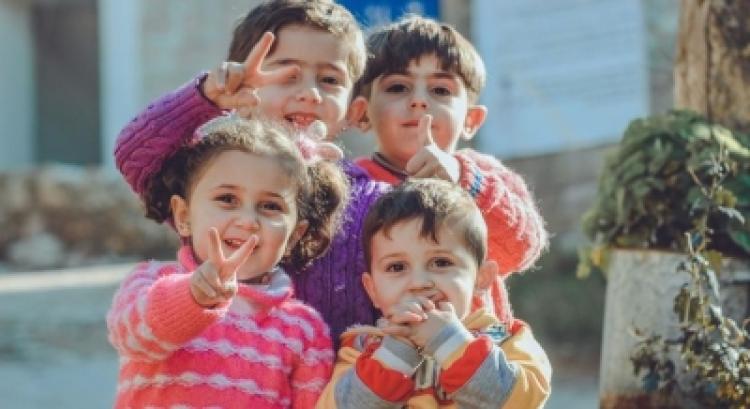9,453 cases of missing children were reported in Delhi and four neighbouring states between January-July 2020. In 74 per cent cases the missing children were girl. In absolute numbers this figure, 7,065, reveals a status report by Child Rights and You (CRY) titled 'COVID and Missing Childhoods: A Status Report from 5 States'. The study was conducted to understand the impact of COVID-19 pandemic led lockdown on status of missing children.
The report was released by CRY on the eve of International Missing Children's Day observed across the globe every year on May 25. It draws inferences for 5 prominent northern states namely Delhi, Uttar Pradesh, Madhya Pradesh, Rajasthan and Haryana.
Both primary and secondary data were used in the report to illustrate the state of missing children during COVID-19. Secondary data were accessed through the National Crime Record Bureau (NCRB) Annual Report 'Crime in India' (2015-2019). During COVID-19, to find out the incidences of missing children Right to Information (RTIs) was used to gather data from Ministry of Women and Child Development (MWCD), Government and State Police Department of the respective States.
Also Read | Health care workers thrice more likely to get Covid infection
Explaining the relevance of the study, Soha Moitra, the Regional Director, CRY (North) said, "The status report on missing children by CRY suggests that the numbers came down between March-April 2020 when lockdown was strict imposed but surge in numbers were seen immediately after relaxation in lockdown. The trend which raises concern is that the highest number of children who went missing were of age group 12-18 years. Out of 9453 cases of missing children 7386 cases were of age group 12-18 years. This accounts for 78 percent of overall cases. The situation is extremely alarming for girls as the status report suggests that out of these 7386 children 82.54 percent (6097 in absolute numbers) were girls."
Moitra further said "In Madhya Pradesh on an average 26 children were reported to go missing every day between the months of January to July, 2020. Amongst, these 26 children 21 were girls. This figure is highest among all the 5 states. In Delhi, despite having the lowest population among all the 5 states, reported on an average 9 children going missing every day, out of which 6 were girls. The least per day average missing children was reported in in Haryana and UP."
State Male Female Total
Delhi 660 1168 1828
Madhya Pradesh 1075 4371 5446
Haryana 163 196 359
Uttar Pradesh 246 558 804
Rajasthan 244 772 1016
Also Read | When it comes to fashion, age is just a number
Emphasising on the fact that the current health crisis has only aggravated the issue of missing children Dr. Mohua Nigudkar, faculty of School of Social Work, Tata Institute of Social Sciences, Mumbai said, "Due to the pandemic, the other implications in terms of loss of life and livelihood, rise in school dropouts, child marriages, children orphaned due to COVID related death of parents/guardian, and child trafficking has necessitated an even more urgent response to missing children. Even prior to the pandemic, the issue of missing children has always been a serious concern in the area of child protection. Under the current situation there is a need to conduct a quick survey on responses to missing children cases at the ground level. Getting into micro details of the challenges being faced by the police department and other key stakeholders in implementing the Standard Operating Procedure (SOP) is the need of the hour."
Missing children in the five States (Source: MWCD)
Pressing on the role of police in dealing with missing children cases, Dr PM Nair, former DGP and now with Indian Police Foundation, said: "Issues of missing children can be addressed only by concerted efforts. On the one side, prioritize and strengthen the law enforcement with professional investigation, bringing all traffickers to book. The linkages of source, transit and destination, along with the demand and supply links need to be broken. The Police Dept needs augmentation of human and financial resources. Accountability of the responders has to be brought in. Empower them with knowledge, skills, resources and right attitude. Also, involve panchayats by setting up PAHT (Panchayats against human trafficking) and college students by setting up AHTC (Anti Human Trafficking Clubs) in colleges. This will provide great support to police and public in effectively assessing issues of missing children."
Regarding the children found/traced, a similar trend was observed. Between January 1 to July, 2020 most of the children were found in the 12-18 year age group, with more girls found than boys. Haryana is the only State where more children were found in the 6-12 year age group, and even in the 12-18 year age group, more boys were found than girls.
"CRY is releasing status report on missing children for last 9 years now. With every report we come across facts that compels us to work more rigorously on the issue. The current situation of pandemic has just added more challenges to it. Thus, there is an urgent need to strengthen the standard operating procedure for dealing with the issue of missing children. This issue becomes more sensitive and concerning with cases of children losing their parents due to COVID-19 being reported from various states making such children more vulnerable. Also, there is a need to strengthen the system of community and panchayat based models keeping in mind that the children were being reported missing even during lockdown when most of them were considered to be with their parents or caregivers," Moitra concluded.


















